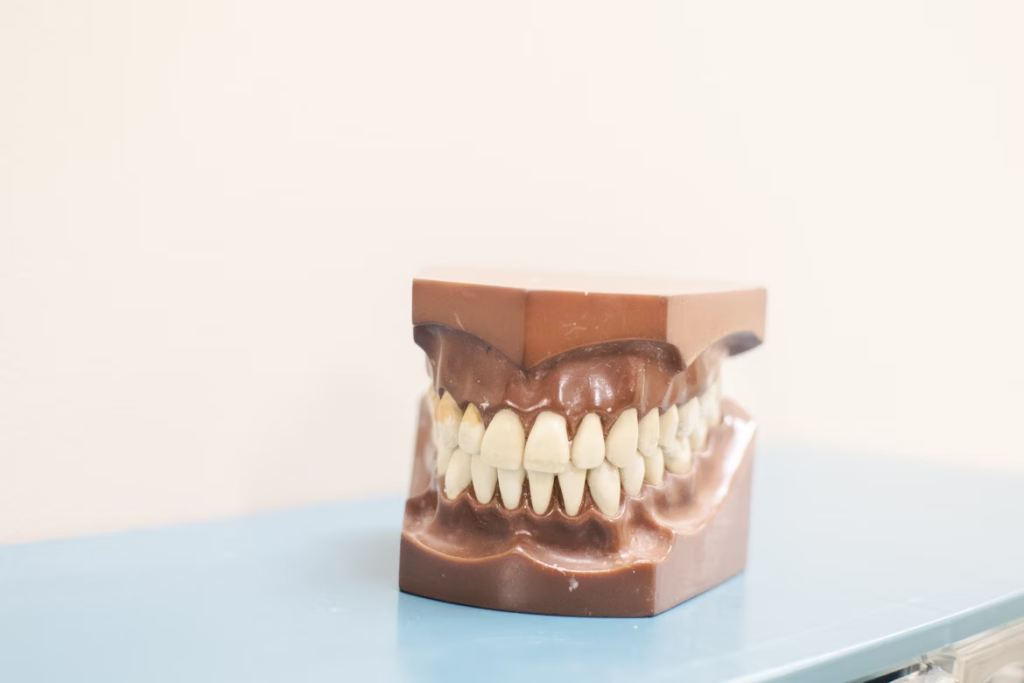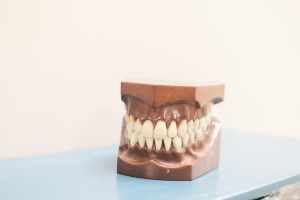What we offer
Pellentesque aliquet nibh nec urna. In nisi neque, aliquet vel, dapibus id, mattis vel, nisi.
Sed pretium, ligula sollicitudin laoreet viverra, tortor libero sodales leo, eget blandit nunc tortor eu nibh.

Corporate Events
Sed pretium, ligula sollicitudin laoreet viverra, tortor libero sodales leo, eget blandit nunc tortor eu nibh.

Wedding & Galas
Sed pretium, ligula sollicitudin laoreet viverra, tortor libero sodales leo, eget blandit nunc tortor eu nibh.

Special Events
Sed pretium, ligula sollicitudin laoreet viverra, tortor libero sodales leo, eget blandit nunc tortor eu nibh.
Make Your Event One To Remember!
The Importance of Early Detection in Oral Health Issues
rly diagnosis is what allows patients to stay ahead of more serious problems. The importance of early detection in oral health issues lies in its ability to prevent minor concerns from turning into major complications.

Whether you’re visiting a general practice or a specialised dental group, regular dental check-ups are more than routine maintenance — they’re opportunities for early identification of changes in the mouth, gums, teeth, and jaw. These early interventions save time, cost, and unnecessary discomfort in the long term.
Why Early Detection Matters in Dentistry
Preventing Disease Progression
Cavities, gum disease, and oral infections do not happen overnight. They begin with subtle changes — a small spot on a molar, mild gum irritation, or increased sensitivity. If identified early, these issues are easy to treat and often reversible. If left undetected, they can spread and affect surrounding tissues, bone, or even overall health.
Early detection prevents unnecessary tooth loss, pain, or more invasive procedures such as root canals, extractions, or oral surgery.
Lowering the Risk of Systemic Complications
Oral health is closely linked to general health. Gum disease has been connected to cardiovascular problems, diabetes, and respiratory issues. When oral infections are not treated promptly, bacteria can enter the bloodstream and impact organs beyond the mouth.
Detecting and managing oral health problems early reduces the chance of systemic effects and supports overall wellbeing.
The Role of Regular Dental Check-Ups
Routine Examinations and Screening
Check-ups every six months allow dentists to identify early signs of decay, gum inflammation, oral cancer, and structural damage. Dentists examine more than just your teeth — they assess jaw movement, tongue appearance, and any abnormalities in soft tissues.
Advanced tools such as digital X-rays, intraoral cameras, and early detection dyes help identify problems before symptoms even arise.
Professional Cleanings
Tartar cannot be removed by brushing alone. During regular cleanings, hygienists remove plaque and tartar build-up, lowering the risk of decay and gum disease. These appointments also provide the opportunity to monitor any changes between visits.
In addition to cleaning, professionals guide patients in refining their home care routine for better long-term outcomes.
Common Oral Health Issues That Benefit from Early Detection
Tooth Decay
Tooth decay starts with demineralisation of enamel and can progress to painful cavities. Small areas of decay often have no pain and go unnoticed until they reach deeper layers.
When caught early, tooth decay can be treated with a simple filling or even reversed with fluoride. Advanced decay may require a crown, root canal, or extraction — which are more expensive and time-consuming.
Gum Disease
Gingivitis is the first stage of gum disease, marked by red, swollen, or bleeding gums. If treated early, it is reversible with improved oral hygiene and professional cleaning.
If ignored, gingivitis can develop into periodontitis, a condition where the gums pull away from the teeth, leading to bone loss, loose teeth, and eventually tooth loss.
Oral Cancer
Oral cancer can affect the lips, tongue, cheeks, gums, or throat. Early signs may include sores that don’t heal, red or white patches, or unexplained lumps. In its early stages, oral cancer is highly treatable, with a significantly better prognosis.
Routine screening during check-ups allows dentists to detect warning signs early. When identified quickly, treatment is less invasive and more successful.
The Link Between Early Detection and Cost Savings
Reducing the Need for Complex Treatments
A small filling costs significantly less than a root canal and crown. Similarly, scaling and polishing to address early gum disease are more affordable than periodontal surgery or bone grafting. Preventive care reduces financial burden and long-term dental expenses.
By investing in routine visits and early treatment, patients avoid the high cost of extensive dental work.
Minimising Time Away from Daily Life
Major procedures often involve multiple visits, recovery time, and temporary lifestyle changes. Early detection helps patients avoid interruptions to work, school, and daily activities.
Treating issues early usually means shorter appointments, less discomfort, and quicker recovery.
Technology That Aids in Early Diagnosis
Digital X-Rays
Digital radiographs offer clearer images with lower radiation exposure. They help dentists detect decay between teeth, abscesses, cysts, and bone loss at stages not visible to the naked eye.
Because they can be viewed immediately, treatment planning begins without delay.
Intraoral Cameras
These small cameras give a detailed view of the mouth and allow both dentist and patient to observe issues in real time. They can identify hairline cracks, early wear, and plaque build-up in hard-to-see areas.
Patients benefit from seeing the condition of their teeth, leading to better understanding and improved compliance with treatment recommendations.
Supporting Early Detection at Home
Monitoring for Subtle Changes
Patients should be aware of changes such as sensitivity to hot or cold, bleeding during brushing, or unusual mouth ulcers. These may be early signs of underlying issues.
Performing self-checks monthly and being attentive to any discomfort or visible changes ensures issues are addressed promptly.
Maintaining a Consistent Oral Care Routine
Good hygiene supports early detection by reducing inflammation and making signs of disease easier to spot. Brushing twice a day, flossing daily, and using fluoride toothpaste are key parts of an effective routine.
Limiting sugar intake and drinking plenty of water also supports better oral health and a cleaner environment for the teeth and gums.
Children and Early Detection
Supporting Healthy Development
Children benefit from early dental visits that monitor jaw growth, tooth eruption, and early signs of decay. Detecting alignment issues or enamel defects early makes orthodontic or preventive treatment easier and more successful.
Fluoride treatments and sealants applied during childhood can protect teeth from cavities and reduce future dental needs.
Forming Lifelong Habits
Early detection in childhood not only prevents problems — it builds trust with dental professionals and encourages regular care into adulthood. Positive experiences at the dentist reduce fear and increase commitment to good habits.
Paediatric dental visits also give parents the chance to ask questions and receive advice tailored to their child’s oral development.
Early Detection in Older Adults
Managing Age-Related Risks
Ageing increases the risk of dry mouth, gum recession, and tooth wear. Regular check-ups help detect these issues before they affect quality of life. Dry mouth can lead to faster decay, while recession exposes tooth roots that are more vulnerable to damage.
Routine monitoring also identifies ill-fitting dentures, oral cancer symptoms, and bone loss in those with missing teeth.
Supporting General Health
Older adults often manage medical conditions like diabetes or heart disease that are closely linked to oral health. Identifying dental issues early helps prevent complications and supports overall wellbeing.
A dentist who understands the needs of older patients can tailor care to manage both oral and systemic health risks.
Frequently Asked Questions
How often should I visit the dentist for early detection?
Most people benefit from a dental check-up every six months. However, some may need more frequent visits based on their risk level and past dental history.
Can problems develop without symptoms?
Yes, many oral health issues begin silently. Decay, gum disease, and even oral cancer may not cause pain or visible changes until they are advanced.
Are children too young for early detection checks?
No, children should visit the dentist by their first birthday or when their first tooth appears. Early visits set the foundation for healthy habits and catch problems before they worsen.
Conclusion
The importance of early detection in oral health issues cannot be overstated. Identifying changes in the mouth early helps prevent the need for complex, costly treatments and protects your general health. Whether you’re managing ongoing dental concerns or simply attending routine check-ups, early diagnosis plays a central role in long-term wellbeing.
Choosing a trusted dental group for ongoing care ensures access to the latest technology and expert assessment. With regular monitoring, consistent home care, and attention to small changes, patients of all ages can enjoy stronger, healthier smiles for life.
Investing time in prevention now will save discomfort, time, and expense later. Early detection truly is the key to preserving your oral health and your quality of life.
General Dental Check-Ups: Why Regular Visits Are Essential
Many people delay or avoid dental visits unless there’s pain, discomfort, or a visible problem. However, general dental check-ups are not just about dealing with existing issues — they’re a key part of keeping your mouth healthy long-term. Whether you have a perfect smile or ongoing dental concerns, routine check-ups are your first line of defence.

If you’re unsure where to begin or need a trusted dentist elwood residents turn to for routine care, this guide explains why regular visits matter and what happens during them.
The Purpose of General Dental Check-Ups
Early Detection of Dental Issues
General dental check-ups allow for early identification of problems such as tooth decay, gum disease, and oral infections. Catching these early helps prevent painful and expensive treatments later. Dentists use visual checks, X-rays, and cleaning tools to spot small issues before they develop into serious concerns.
Prevention Over Treatment
Prevention is more effective — and less costly — than cure. Regular visits focus on keeping your teeth and gums in good condition. A check-up helps prevent cavities, manage plaque, and maintain healthy gum tissue. It’s not just about reacting to problems but stopping them before they start.
Monitoring Existing Conditions
For people with dental restorations like fillings, crowns, or implants, general dental check-ups are essential. Dentists monitor the condition of these restorations, ensuring they remain secure and functional. Wear and tear are common, and small repairs are easier and cheaper than replacements.
What Happens During a General Dental Check-Up
Comprehensive Examination
A dentist begins with a thorough visual inspection of your mouth, gums, and teeth. This includes checking for signs of decay, enamel damage, swelling, and abnormalities. Gums are assessed for bleeding, recession, and inflammation. The dentist may also check for signs of grinding or bite issues.
X-Rays for Hidden Issues
X-rays are sometimes used during check-ups to view parts of the teeth and jaw that aren’t visible. These help identify cavities between teeth, bone loss, and issues below the gumline. The dentist will only recommend X-rays when needed and ensure safety protocols are followed.
Professional Cleaning
During a check-up, a hygienist or dentist performs a professional clean, removing plaque and tartar that can’t be removed by brushing at home. This cleaning helps reduce the risk of gum disease and keeps your teeth feeling smoother and looking brighter.
The Benefits of Regular Check-Ups
Reduced Risk of Tooth Loss
One of the main reasons people lose teeth is untreated gum disease. Regular check-ups reduce this risk by detecting signs of periodontal disease early and allowing for prompt treatment. Professional cleanings also play a major role in keeping gum tissue healthy.
Lower Costs Over Time
Although check-ups involve some cost, they are minor compared to treatments for neglected dental issues. A small filling costs less than a root canal or crown. Investing in prevention reduces the need for complex procedures down the track.
Fresher Breath and Cleaner Teeth
Regular check-ups often include cleaning, which helps improve your breath and the feel of your teeth. Tartar can trap bacteria that contribute to bad odours. Removing these deposits keeps your breath fresher and your smile cleaner.
How Often Should You Have a Dental Check-Up?
Standard Recommendation
For most adults and children, dentists recommend a check-up every six months. This timing strikes a balance between maintaining oral health and detecting problems early. In some cases, dentists may suggest a longer or shorter interval, depending on individual risk factors.
High-Risk Patients
Some people need more frequent check-ups. These include smokers, people with diabetes, those with a history of gum disease, and patients who are pregnant. For these groups, dental problems can develop more quickly, and closer monitoring is required.
Common Problems Found During Check-Ups
Cavities and Tooth Decay
Tooth decay often starts without symptoms. Dentists can detect the early signs before holes form or pain begins. Small areas of decay can be managed with fillings or fluoride treatments if caught early.
Gum Disease
Redness, bleeding, and receding gums are common symptoms of gum disease. A dentist checks the depth of the pockets around your teeth and identifies gum infections before they cause damage to bone or soft tissue.
Cracks or Wear
Small cracks in teeth may not be noticeable to you, but they can cause sensitivity and lead to larger problems. Bruxism, or tooth grinding, is another issue often found during check-ups. A dentist may recommend night guards or other treatments to prevent further damage.
General Check-Ups Support Overall Health
Connection Between Oral and General Health
Oral health is linked with overall health. Poor gum health has been associated with heart disease, stroke, and diabetes. Inflammation in the mouth can contribute to problems elsewhere in the body, making routine dental care part of your general health maintenance.
Detecting Oral Cancer Early
General dental check-ups include an oral cancer screening. Dentists examine the tongue, lips, cheeks, and throat for unusual changes. Early signs of oral cancer are often painless, so regular checks improve the chance of detecting it at a treatable stage.
Preparing for Your Dental Check-Up
What to Bring
Bring a list of medications and medical history updates to your appointment. Let your dentist know about any health changes, allergies, or discomfort you’ve experienced. Sharing this information helps the dentist tailor care to your needs.
How to Brush and Floss Before Your Visit
Continue with your regular oral care routine before your visit. Brushing and flossing are expected, but don’t overdo it or attempt to clean heavily just before your appointment. Dentists are more interested in your long-term habits than a one-off clean.
What If You’re Nervous About Going?
Dental Anxiety Is Common
Many people feel uneasy before a dental visit. This may come from past experiences, fear of pain, or embarrassment. Letting your dentist know about your concerns is helpful — they can offer ways to ease anxiety, from explaining each step to using distraction techniques.
Options for Managing Discomfort
Modern dentistry is far more comfortable than it used to be. For those needing extra reassurance, some practices offer sedation or calming environments. Ask about options if fear or anxiety is stopping you from booking regular visits.
Frequently Asked Questions
Do I still need check-ups if I brush and floss daily?
Yes, brushing and flossing help, but they can’t remove all plaque or spot early issues.
What’s the difference between a check-up and a clean?
A check-up is an examination of your teeth and gums, while a clean removes tartar and plaque.
Can a general check-up detect oral cancer?
Yes, dentists include oral cancer screening as part of the check-up.
Conclusion
General dental check-ups are not just routine appointments — they are a vital part of maintaining oral and overall health. They help catch problems early, reduce the risk of tooth loss, and support long-term wellbeing. Whether you’re visiting a dentist elwood locals recommend or another professional, making regular appointments should be a lifelong habit.
Even if your teeth feel fine, small issues may be developing beneath the surface. Prevention is more effective and far less costly than treatment. Scheduling regular check-ups ensures your smile stays strong, healthy, and confident for years to come.
How to Select the Right Builder for Your Home Renovation: Key Questions to Ask
When it comes to home renovations, selecting the right builder is one of the most important decisions you’ll make. Whether you’re planning a small renovation or a significant project like home extensions Melbourne, choosing the right builder ensures that the work is completed on time, within budget, and to your expectations.

However, with so many builders available, it can be overwhelming to determine which one is best suited for your renovation needs. This article will guide you through key questions to ask when selecting a builder for your home renovation, ensuring you make an informed and confident decision.
Why Choosing the Right Builder Matters
A home renovation is not just about aesthetics; it’s about creating a functional and comfortable living space that enhances the value of your property.
Choosing the right builder is pivotal to the success of your renovation, as a reliable builder ensures that the project is completed on time, adheres to building codes and regulations, and meets your vision and expectations. Additionally, clear and consistent communication throughout the process is essential for addressing any concerns and ensuring everything runs smoothly.
Reputation and Experience
Before diving into the questions to ask, it’s important to consider a builder’s reputation and experience. Established builders with a strong track record in home renovations, especially in the area you live in, can often provide better results.
Key Questions to Ask When Selecting a Builder for Your Home Renovation
Selecting a builder requires more than just comparing quotes. Here are key questions to ask to ensure you’re hiring the best builder for your home renovation.
What is Your Experience with Home Renovations?
It’s essential to hire a builder who specialises in home renovations rather than new builds, as renovations often present unique challenges. Ask the builder about their experience with similar projects, especially those that are similar in scale and complexity to your planned renovation.
Why It Matters
Home renovations involve working within existing structures, which can reveal unexpected issues such as outdated plumbing or structural weaknesses. A builder with experience in renovations will be better equipped to handle these surprises and adapt to changing circumstances.
Can You Provide References or Portfolio Examples?
A trustworthy builder should be able to provide references from previous clients or examples of past projects. Contacting these references will give you insight into the builder’s quality of work, reliability, and professionalism.
Why It Matters
Seeing completed projects firsthand or hearing from past clients can provide peace of mind. You can better understand the builder’s work ethic, how they handle challenges, and whether they meet deadlines. It’s also important to see if their previous work aligns with your renovation style and vision.
Are You Licensed and Insured?
Make sure the builder is properly licensed and insured to carry out the work. In Australia, builders must hold the relevant license to ensure they meet building regulations and safety standards. Insurance is equally important, as it protects you in case of accidents or damage during the renovation process.
Why It Matters
A licensed builder adheres to building codes, ensuring that your renovation is safe and compliant with local regulations. Insurance provides coverage for accidents or damage that could occur during the renovation, saving you from potential financial loss.
What is Your Estimated Timeline for the Project?
Every renovation project has a timeline. Discuss the expected start and completion dates with the builder to ensure they align with your goals. It’s also important to ask about potential delays and how the builder plans to manage them.
Why It Matters
A clear timeline helps set expectations and ensures that the renovation is completed on schedule. While some delays are inevitable, an experienced builder should be able to provide realistic estimates and outline how they will handle unforeseen issues.
What is the Total Cost of the Renovation?
Understanding the total cost of your renovation is essential. Ask the builder for a detailed breakdown of costs, including materials, labour, permits, and any potential additional expenses. Be wary of low quotes, as they could indicate corners are being cut.
Why It Matters
A clear, detailed estimate helps you understand where your money is going and prevents unexpected costs from arising during the project. It also allows you to compare quotes from different builders to ensure you’re getting value for your money.
Will You Handle the Necessary Permits and Inspections?
Certain renovations require permits or inspections, such as structural changes, plumbing, or electrical work. Confirm that your builder is familiar with the local council regulations and will handle all the required paperwork for permits and inspections.
Why It Matters
A builder who handles permits and inspections will save you time and stress. They’ll ensure that your renovation complies with local zoning and building codes, and that the work is officially approved.
What Will Be Included in the Contract?
The contract should outline every aspect of the renovation, including the scope of work, the timeline, payment schedule, and any warranties offered. It’s important to thoroughly review the contract to ensure all agreed-upon details are included.
Why It Matters
A well-written contract protects both you and the builder by clearly defining the expectations and responsibilities of each party. It also serves as a reference point in case any disputes arise during the renovation.
How Do You Handle Unexpected Issues or Changes?
Renovations often uncover hidden issues, such as plumbing problems or structural defects. Ask the builder how they manage unforeseen complications and if there’s a process in place for making changes or adjustments to the plan.
Why It Matters
Having a builder who is flexible and prepared for unexpected issues ensures that your renovation remains on track. A good builder will be transparent about any changes to the original plan, including additional costs and delays.
How Do You Ensure Quality Control During the Renovation?
Quality control is essential to achieving a high-end renovation. Ask the builder what steps they take to ensure the work is of the highest quality, from materials to workmanship. This might include regular inspections, checks at key stages of the project, and working with trusted subcontractors.
Why It Matters
Maintaining quality throughout the renovation process ensures that the finished project meets your expectations and is built to last. Builders who implement quality control measures are more likely to deliver a flawless result.
Other Considerations When Selecting a Builder
While asking the right questions is important, there are other factors to consider before making your final decision.
Communication and Rapport
Good communication is vital for a successful renovation. The builder should be open to discussing ideas, addressing concerns, and keeping you updated on the project’s progress. You should also feel comfortable asking questions throughout the process.
Why It Matters
Clear and consistent communication ensures that you’re on the same page with the builder and can help avoid misunderstandings. A builder who is approachable and communicative will also be more likely to understand your vision and deliver on it.
Subcontractors and Suppliers
Ask the builder about the subcontractors and suppliers they work with. Builders often hire subcontractors for specific tasks like electrical work or plumbing, so it’s important to know who will be handling these aspects of the renovation.
Why It Matters
Reliable subcontractors and suppliers ensure the work is completed to a high standard. If a builder works with trusted professionals, it can give you confidence in the overall quality of the renovation.
Frequently Asked Questions
How do I know if a builder is reliable?
Check the builder’s credentials, including their licensing, insurance, and past project references. Also, ensure they have experience with renovations similar to your project and a clear, detailed contract.
How much does a home renovation cost?
The cost of a home renovation depends on the scope of work, materials used, and location. On average, renovations in Melbourne can range from $1,500 to $3,000 per square metre, but this can vary significantly based on your specific needs.
Can I make changes during the renovation?
Yes, you can make changes during the renovation, but it’s important to discuss these changes with your builder. Additional work may come with extra costs, so ensure any adjustments are agreed upon in writing.
Conclusion
Selecting the right builder for your home renovation is essential to ensuring that your project runs smoothly and meets your expectations. By asking the right questions and understanding the builder’s experience, process, and approach, you can make an informed decision.
Whether you’re planning small home extensions Melbourne or a more extensive renovation, the right builder will make all the difference in creating a space that suits your needs and enhances the value of your property.
Understanding Wedding Traditions: From “Something Old” to “Something Blue”
Weddings are a celebration of love, commitment, and tradition, and over the years, numerous customs have developed around the occasion. One of the most famous and beloved traditions is the “Something Old, Something New, Something Borrowed, Something Blue” rhyme.

These wedding traditions, passed down through generations, carry symbolic meanings that are intended to bring good luck, prosperity, and happiness to the newlyweds. In this article, we’ll explore the origins and significance of these customs and other wedding traditions, including practical considerations like wedding dress dry cleaning cost to help you preserve your gown for years to come.
The Origins of “Something Old, Something New, Something Borrowed, Something Blue”
This popular rhyme has been a part of English wedding traditions for centuries. It is said to bring good fortune to the bride as she embarks on her new life. Each of the four items represents something symbolic that contributes to the bride’s future happiness. Let’s take a deeper look at the meaning behind each component of the rhyme.
Something Old: Honouring the Past
The tradition of “something old” is believed to represent continuity, linking the bride to her past, her family, and her heritage. This item often signifies that the bride is bringing her personal history with her into her new life. Whether it’s a family heirloom, a piece of jewellery, or a beloved item from her childhood, “something old” honours the journey that led her to this significant day.
Why Something Old is Important
Something old connects the bride to her roots and to the generations of women who have walked the path of marriage before her. This item symbolises a connection to the past and offers stability and wisdom as she enters into this new chapter of her life. It’s a way of carrying cherished memories forward.
Something New: Embracing the Future
In contrast to “something old,” “something new” represents hope and optimism for the future. It’s about the new life the bride is beginning with her partner. This item can be anything that signifies fresh beginnings, whether it’s a new piece of clothing, jewellery, or even something as simple as a bouquet.
Why Something New Matters
“Something new” symbolises the couple’s new journey together, filled with opportunities and growth. It brings positivity and signifies the excitement of starting a life with a new partner. It’s a way of welcoming the future and all the new experiences that await.
Something Borrowed: Sharing Joy with Others
“Something borrowed” represents the sharing of joy and good fortune. Traditionally, the borrowed item is given to the bride by a friend or family member who is happily married. The idea behind this is that the happiness of the person lending the item will transfer to the bride, ensuring a happy and successful marriage.
The Significance of Borrowing
Borrowing an item from a loved one, particularly someone who is already happily married, is believed to bring blessings for a long and happy union. It’s a gesture of support and goodwill from the people closest to the bride, offering not only good luck but also love and connection as she starts this new chapter in her life.
Something Blue: Fidelity and Love
“Something blue” is often considered one of the most important parts of the tradition. Blue has long been associated with weddings, symbolising love, fidelity, and loyalty. The colour blue is also believed to ward off evil spirits, making it a protective element for the marriage.
Why Blue is Special
The colour blue has had symbolic meaning for centuries. In ancient times, blue was associated with the Roman goddess Juno, the goddess of marriage, who was often depicted wearing blue. By wearing something blue, the bride is invoking the goddess’s blessing for a marriage filled with love, loyalty, and happiness.
Other Wedding Traditions and Customs
While “something old, something new, something borrowed, something blue” is one of the most well-known wedding traditions, there are many other customs that have been passed down through the years, each with its own unique meaning and significance.
The Wedding Ring
One of the oldest wedding traditions is the exchange of rings, symbolising eternal love and commitment. The circular shape of the ring represents infinity, with no beginning and no end, signifying a love that lasts forever. The wedding ring is worn on the fourth finger of the left hand because it was once believed that a vein in this finger ran directly to the heart.
Symbolism of the Wedding Ring
The wedding ring serves as a visible symbol of the bond between the couple. It’s a constant reminder of their vows and commitment to one another. Over the years, wedding rings have become a universal symbol of love, commitment, and unity.
The Veil
The bride’s veil is another time-honoured tradition, and it carries several meanings depending on the culture. In many cultures, the veil symbolises modesty, purity, and a new identity. In ancient times, it was believed to protect the bride from evil spirits, keeping her safe during the ceremony.
What the Veil Represents
The veil is often seen as a symbol of the transition from maidenhood to wifehood. The moment the veil is lifted by the groom after the ceremony can be seen as the final moment of the bride’s transition into married life.
Tossing the Bouquet
The custom of tossing the bouquet is believed to bring good luck to the single women attending the wedding. The tradition stems from the idea that catching the bouquet would ensure the woman would be the next to marry. Today, it is a fun and lighthearted part of the wedding celebration.
Why Toss the Bouquet?
This tradition serves as a way of involving guests in the celebration and sharing in the joy of the newlywed couple. It’s a playful moment that brings excitement to the reception and gives unmarried women something to look forward to.
The First Dance
The first dance is a cherished wedding tradition, symbolising the couple’s first moments of marital unity. It’s a beautiful and intimate part of the evening that sets the tone for the rest of the celebration. The couple’s first dance can be choreographed or spontaneous, but it’s always a meaningful experience.
The Symbolism of the First Dance
The first dance symbolises the couple’s union and the beginning of their life together. It marks the first step in their journey as a married couple, sharing a special moment in front of their family and friends.
Practical Considerations: Wedding Dress Care
While wedding traditions add a lot of meaning and significance to your special day, there are also practical considerations to keep in mind. One such consideration is caring for your wedding dress. After the wedding, many brides choose to have their dress professionally cleaned to preserve it for future generations.
The Importance of Wedding Dress Dry Cleaning
The wedding dress dry cleaning cost can vary depending on factors such as the fabric of the gown and its condition after the wedding. It’s important to have your dress cleaned as soon as possible after the event, as stains can set over time. Professional cleaning ensures that the dress is preserved, allowing you to store it safely or even pass it down as an heirloom.
Caring for Your Wedding Dress
After the wedding, take your dress to a reputable dry cleaner who specialises in wedding gowns. They will clean and restore it using specialised techniques to maintain the integrity of the fabric. It’s also a good idea to store the gown in an acid-free box to protect it from dust and damage.
Frequently Asked Questions
What is the meaning of “something old” in wedding traditions?
“Something old” symbolises continuity and honours the bride’s past, linking her to her family and heritage as she begins her new life with her partner.
Why is the colour blue important in weddings?
Blue represents fidelity, loyalty, and love. It’s also believed to bring good luck and protection, making it a popular choice for brides to wear on their wedding day.
How do I preserve my wedding dress after the big day?
After the wedding, take your dress to a professional dry cleaner who specialises in wedding gowns. They will clean and preserve it, ensuring it remains in excellent condition for years to come.
Conclusion
Wedding traditions like “something old, something new, something borrowed, something blue” are more than just charming customs—they hold deep meanings that link brides to their past, present, and future. By understanding the significance of these traditions, you can fully appreciate the cultural and emotional value they bring to your celebration.
Additionally, don’t forget practical considerations, such as caring for your wedding dress to ensure it remains a cherished heirloom for years to come. Embracing these traditions adds a special touch to your wedding day and makes it even more memorable.
The Complete Guide to Interstate Transport Services Across Australia
Australia’s vast landscape means that businesses need reliable and efficient transportation networks to move goods from one state to another. Whether you are transporting bulk goods, perishable items, or time-sensitive deliveries, understanding the available interstate transport services is essential.
The freight people play a key role in ensuring that businesses can connect with suitable transport solutions to meet their specific needs across the country.

This complete guide will provide you with everything you need to know about interstate transport services across Australia, from the different types of services available to how to choose the best transport option for your business.
What is Interstate Transport?
Interstate transport refers to the movement of goods between two or more states within Australia. This is a critical component of Australia’s logistics industry, as it connects businesses across the nation and ensures that goods are delivered efficiently to all corners of the country.
Interstate transport services involve various modes of transport, including road, rail, air, and sea freight, each with its own set of advantages depending on the shipment type, distance, and urgency. Selecting the right mode of transport is key to ensuring that your goods are delivered on time and at a cost-effective price.
Types of Interstate Transport Services
Australia offers a wide range of interstate transport services. The most common modes of transport are road, rail, air, and sea, each of which has distinct benefits depending on your business’s needs.
Road Freight: The Backbone of Interstate Transport
When it comes to interstate transport, road freight is often the most widely used mode of transport. Australia’s well-developed road network makes it a versatile option for transporting goods over long distances between states.
Advantages of Road Freight
- Flexibility: Road transport can be tailored to a wide range of cargo, from small packages to large freight loads. It also allows for door-to-door delivery, making it an excellent choice for businesses that require specific delivery locations.
- Cost-Effective: Road transport is often the most affordable option for transporting goods across states, especially for small to medium-sized shipments.
- Speed: While road transport can take longer over longer distances, it is often quicker than rail or sea freight when moving goods within the same region.
How to Choose Road Freight
When choosing a road transport service, it is important to consider the type of goods being transported. For time-sensitive or delicate shipments, choosing a road freight company that offers express services or refrigerated transport may be necessary. Additionally, selecting a reputable provider like the freight people ensures that the goods are handled professionally and delivered within the expected timeframe.
Rail Freight: Efficient and Reliable for Bulk Shipments
Rail freight is another key mode of interstate transport in Australia. While not as flexible as road freight, it is highly efficient for bulk shipments and is particularly well-suited for long-distance transport between major cities and ports.
Advantages of Rail Freight
- Cost-Efficiency for Large Volumes: Rail freight is typically more cost-effective for large and bulk shipments compared to road transport. This makes it an ideal choice for industries such as mining, manufacturing, and agriculture that need to move heavy goods.
- Environmental Benefits: Rail transport produces fewer emissions per tonne of freight compared to road transport, making it a more sustainable option for businesses concerned about reducing their carbon footprint.
- Reliability: Rail services are less affected by road congestion and weather conditions, making them a reliable choice for long-distance shipments.
How to Choose Rail Freight
Rail freight is ideal for bulk items such as machinery, raw materials, or large-scale retail shipments. However, rail is often not a door-to-door solution, so businesses will need to account for transportation to and from the nearest rail terminal. If your business requires cost-effective, large-volume transport across the country, rail freight may be the best option.
Air Freight: Fast and Efficient for Urgent Shipments
For businesses that need to move goods quickly across the country, air freight offers the fastest option for interstate transport. Air transport is commonly used for high-value, time-sensitive, or perishable goods.
Advantages of Air Freight
- Speed: Air freight is the fastest mode of transport, with shipments arriving within hours, making it ideal for time-sensitive deliveries.
- Security: Goods transported by air are subject to rigorous security measures, making it a secure option for high-value or sensitive items.
- Global Reach: While air freight is commonly used for international shipping, it is also an excellent choice for moving goods between Australia’s major cities in a short time.
How to Choose Air Freight
Air freight is most suitable for businesses that need to ship perishable goods, medical supplies, or high-value products that require quick delivery. While it is more expensive than other modes of transport, it is often the best choice when speed and security are paramount.
Sea Freight: Ideal for Large Shipments and Bulk Cargo
For businesses that need to move large volumes of goods between Australia’s coastal cities, sea freight is an efficient option. Though sea freight is typically associated with international shipping, it is also widely used for interstate transport between ports.
Advantages of Sea Freight
- Cost-Effective for Large Shipments: Sea freight is often the most cost-effective solution for large, bulk shipments, especially for goods that are not time-sensitive.
- Suitable for Oversized Goods: Sea freight can accommodate large and heavy cargo that might be difficult or expensive to ship by road or air.
- Less Risk of Damage: Cargo transported by sea is generally less susceptible to damage from accidents or rough roads, though the long transit times can introduce delays.
How to Choose Sea Freight
Sea freight is best for bulk shipments of goods that are not urgent and can be transported by sea from one port to another. While it can be slower than other options, it remains a reliable and affordable solution for large-scale shipments.
How to Choose the Right Interstate Transport Service
When choosing the best interstate transport service for your business, there are several factors you should consider to ensure that the service aligns with your shipping needs.
Consider the Type of Goods Being Transported
The nature of the goods being transported is a major factor in selecting the right mode of transport. Perishable goods or high-value items may be better suited to air freight, while large volumes of non-perishable products might be more economical via rail or road freight.
Speed vs Cost
If time is a critical factor for your shipments, you may need to choose a faster mode of transport such as air freight or express road transport. However, if cost is a priority, rail or sea freight could be more suitable, especially for bulk shipments.
Evaluate Delivery Location and Flexibility
Interstate transport services vary in terms of flexibility and delivery options. Road freight offers door-to-door service, while rail and sea freight may require additional handling and transfer between different transportation modes. Be sure to evaluate your delivery requirements and choose a service that meets your needs.
Reliability of the Transport Provider
Choosing a reputable transport provider is essential to ensuring that your goods arrive on time and in good condition. Providers like the freight people offer robust and reliable services across Australia, helping businesses streamline their logistics operations. Check reviews, get recommendations, and assess the provider’s reputation before making a decision.
Frequently Asked Questions
What are the main modes of interstate transport in Australia?
The main modes of interstate transport in Australia are road freight, rail freight, air freight, and sea freight. Each has its own advantages depending on the size, weight, urgency, and cost considerations of the shipment.
How do I choose the right interstate transport provider for my business?
To choose the right interstate transport provider, consider factors like the type of goods being shipped, delivery timelines, costs, and the reputation of the provider. Evaluate all available options and select the service that best meets your business needs.
Can freight management software help with managing interstate transport?
Yes, freight management software can help businesses optimise their interstate transport operations. The software allows you to automate tasks such as booking shipments, tracking deliveries, and calculating costs, streamlining your logistics processes and ensuring smoother operations.
Conclusion
Understanding the variety of interstate transport services across Australia is essential for businesses that need to move goods efficiently and cost-effectively. Whether you need road, rail, air, or sea freight, each mode has its own benefits depending on your specific needs.
By carefully considering factors such as the type of goods being transported, speed requirements, cost, and the reputation of the transport provider, businesses can make more informed decisions. With the help of services like the freight people and advanced tools like freight management software, businesses can streamline their shipping processes and ensure the timely and reliable delivery of goods across Australia.
Melbourne to Geelong: A Seamless Moving Experience
Moving from one city to another, such as from Melbourne to Geelong, can seem like a daunting task. Whether you’re relocating for work, family reasons, or simply for a change of scenery, making the process as seamless as possible is key. One way to ensure that your move goes smoothly is by hiring professional movers who are experienced in handling relocations between cities.

If you’re planning on making the move from Melbourne to Geelong, Got the Moves Removalists can offer a seamless moving experience that will take the stress out of the process. In this article, we will provide you with helpful tips and guidance on how to manage your move from Melbourne to Geelong efficiently.
Why Choose Professional Movers for Your Relocation?
When moving from Melbourne to Geelong, the distance alone can make the process seem intimidating. With over 70 kilometres between these two cities, it’s easy to become overwhelmed by the logistics of the move. Professional movers, especially those who specialise in interstate or city-to-city relocations, can simplify the process and ensure that everything goes according to plan.
Preparing for Your Move from Melbourne to Geelong
The key to a seamless moving experience is preparation. By planning ahead, you can minimise the last-minute rush and ensure that everything goes smoothly.
Plan and Organise Ahead of Time
It’s vital to start planning well in advance of your move. This will give you time to handle all aspects of the move, from sorting through your belongings to notifying utility companies and forwarding your mail. Organising a timeline for your move and setting realistic goals each day will help keep everything on track.
Sort Your Belongings
Before packing, take time to sort through your items. Decluttering is a good practice when moving, as it will not only make the packing process quicker but also save you from transporting unnecessary items. Sell, donate, or throw away items you no longer need. This will lighten your load and reduce the overall moving cost.
Notify Relevant Parties
Make sure to notify important services and organisations of your new address. This includes your bank, employer, utility companies, schools, and healthcare providers. By addressing these details early, you can avoid any disruptions once you’ve moved.
Packing Tips for a Stress-Free Move
Packing is one of the most time-consuming parts of any move. The key is to pack systematically and carefully to avoid any damage during transport.
Start Early
Begin packing at least a week or two before your moving day. Start with non-essential items such as decorations, seasonal clothing, and books. Leave everyday essentials until closer to the move. This gradual approach ensures you’re not overwhelmed by last-minute packing.
Use the Right Packing Materials
Invest in quality packing materials to ensure your belongings are well protected. Use sturdy boxes, packing tape, bubble wrap, and furniture blankets. Label each box clearly with its contents and the room it belongs in. This will make unpacking much easier once you arrive at your new home in Geelong.
Protect Fragile Items
Fragile items such as glassware, electronics, and artwork should be packed carefully. Wrap each item in bubble wrap or packing paper to cushion it. For extra protection, use specialised boxes designed for delicate items.
Choosing the Right Removalists for Melbourne to Geelong Moves
Choosing the right removalists is essential for a seamless move. For a smooth relocation, you need a company that is experienced in long-distance moves and understands the logistics involved in a move between Melbourne and Geelong.
Look for Experienced Movers
Look for removalist companies with a proven track record of successful moves between cities. Got the Moves Removalists is one example of a reliable company that can handle moves from Melbourne to Geelong. Experience is key, as it ensures the movers are familiar with the roads, traffic patterns, and potential challenges of the journey.
Get Quotes and Compare
Contact several moving companies to get quotes for your move. Be sure to provide details about the size of your home, the amount of furniture, and any special requirements (such as fragile or bulky items). By comparing quotes, you can find a moving company that fits your budget and needs.
Ask About Insurance
When moving between cities, the risk of damage or loss during transit increases. Ensure that your removalists provide insurance for your belongings. Ask about the details of the coverage they offer and make sure it meets your needs.
The Moving Day: What to Expect
The big day is finally here! Moving day can be both exciting and stressful, but knowing what to expect can help keep everything organised.
Prepare Your Home for the Movers
Before the removalists arrive, make sure that all pathways are clear and ready for the movers. This will help them load the truck quickly and efficiently. If you have any pets, consider arranging for someone to look after them during the move. This will prevent any distractions or stress for both your pets and the movers.
Supervise the Loading Process
When the movers arrive, supervise the loading process. This ensures that all items are packed carefully and securely. Make sure that fragile items are handled with extra care. Once the truck is packed and ready to go, double-check that nothing is left behind.
Make Sure Everything Is Packed Securely
Before the movers leave for Geelong, ensure that everything is secure in the truck. This includes checking that the boxes are stacked properly, and heavy furniture is secured with straps. This will help prevent any damage during the journey.
Arriving in Geelong: Unpacking and Settling In
Once you arrive at your new home in Geelong, the focus shifts to unpacking and getting settled. Here are some tips to make the process as easy as possible.
Unpack the Essentials First
Upon arrival, start by unpacking the essentials: bed linens, toiletries, kitchen items, and anything you need immediately. This will ensure you can settle in comfortably while you tackle the rest of the unpacking.
Take It One Room at a Time
Unpack one room at a time to avoid overwhelming yourself. Start with the most important rooms, such as the bedroom and kitchen, and work your way through the rest of the house. This will help you stay organised and focused.
Reconnect Utilities
Once you’ve settled in, make sure to reconnect essential utilities such as water, electricity, and internet. This will ensure that you can fully enjoy your new home in Geelong without any interruptions.
Frequently Asked Questions
How far in advance should I book my removalists?
It’s recommended to book your removalists at least 2-4 weeks before your moving date, especially if you’re moving during a busy period. This ensures you get your preferred moving date and allows time for any necessary preparations.
What’s the best way to protect fragile items during the move?
To protect fragile items, wrap them in bubble wrap, packing paper, or soft towels. Place them in sturdy boxes and clearly label them as fragile. Using proper packing materials and boxes will ensure that your items remain safe during the move.
How long does it take to move from Melbourne to Geelong?
The move from Melbourne to Geelong typically takes a few hours, depending on traffic conditions and the size of the move. Most professional removalists can complete the move in one day, but it’s a good idea to allow for some flexibility.
Conclusion
Moving from Melbourne to Geelong doesn’t have to be a stressful experience. By planning ahead, hiring experienced removalists Moonee Ponds, and packing carefully, you can ensure that your relocation is seamless and efficient.
From preparing your home for the movers to settling into your new life in Geelong, following these tips will help you transition smoothly into your new environment. With the right preparation and the right moving company, your move can be a positive and stress-free experience.
What to Do When Laser Hair Removal Doesn’t Deliver the Desired Results?
Laser hair removal has become a popular solution for long-term hair reduction, offering convenience and efficiency compared to traditional hair removal methods like waxing or shaving.
However, like any treatment, it doesn’t always deliver the desired results for everyone. If you’ve found yourself wondering, what to do when laser hair removal doesn’t deliver the desired results, you’re not alone.
In this article, we will address common concerns related to laser hair removal effectiveness and discuss what you can do if you find that your treatment isn’t giving you the results you expected.

If you’re asking how long does laser last, it’s important to note that laser hair removal should offer long-lasting results with the right treatment plan. Let’s look at the possible reasons for unsatisfactory results and how you can resolve them.
Understanding Why Laser Hair Removal Might Not Work
What to Expect from Laser Hair Removal
Laser hair removal typically offers long-lasting hair reduction after a series of treatments. Most people experience noticeable results within a few sessions, but optimal results may take time.
The treatment works by targeting hair follicles with light energy, which prevents future hair growth. However, the effectiveness of the treatment depends on several factors, including the type of hair and skin, the equipment used, and the skill of the practitioner.
If you’re not getting the expected results, it’s important to consider what might be contributing to the issue. Below are some common reasons why laser hair removal may not work as effectively as anticipated.
Hair and Skin Type Factors
One of the primary factors influencing the success of laser hair removal is the contrast between your hair colour and skin tone. Laser hair removal works best on individuals with light skin and dark hair.
The laser targets the pigment in the hair follicles, so darker hair is easier to treat than lighter hair.
If you have light hair (blonde, grey, or red), you might find laser hair removal less effective since the laser has less pigment to target.
Similarly, individuals with darker skin may experience challenges because the laser may not differentiate between the skin and the hair, resulting in less effective treatment.
Advanced technologies, however, have improved laser treatments for darker skin tones, so it’s important to consult a professional to determine the best approach for your skin type.
Common Reasons for Laser Hair Removal Not Delivering Results
Insufficient Number of Sessions
Laser hair removal generally requires multiple sessions to achieve optimal results. Hair grows in cycles, and the laser is most effective during the active growth phase.
Since not all hairs are in the same phase at the same time, multiple sessions spaced several weeks apart are necessary to target all hair follicles. If you’ve only had one or two sessions, you may not see the full benefit of the treatment yet.
Inconsistent or Improper Settings
Another common reason for unsatisfactory results is improper settings on the laser machine. The power of the laser needs to be adjusted according to your skin and hair type.
If the settings aren’t tailored to your individual needs, the laser may not be effective in targeting the hair follicles. It’s important to ensure that you’re visiting a skilled professional who can assess your needs and adjust the laser settings accordingly.
Shaving or Waxing Between Treatments
To ensure that laser hair removal is effective, it’s essential to follow the pre-treatment instructions, which typically include avoiding waxing, plucking, or bleaching the hair. These methods interfere with the laser’s ability to target the hair follicle properly.
Shaving, on the other hand, is usually allowed since it doesn’t affect the follicle, but if you’re not following the instructions correctly, it can lead to less effective results.
Hormonal Changes
Hormonal imbalances or fluctuations can impact the results of laser hair removal. For example, conditions such as polycystic ovary syndrome (PCOS), pregnancy, or menopause can affect hair growth patterns.
These changes may cause new hair to grow in areas previously treated with laser hair removal, or they may interfere with the reduction of hair in the targeted area.
If hormonal changes are the cause, it may be necessary to treat the area again once hormone levels stabilise. A professional can help guide you on how to proceed if you suspect hormonal changes are affecting your treatment.
Incorrect Timing Between Sessions
The timing between laser hair removal sessions is also critical. It’s usually recommended to space your sessions 4 to 6 weeks apart, depending on the treatment area and your hair growth cycle.
Waiting too long between sessions can reduce the treatment’s effectiveness, as the hair may not be in the ideal growth phase.
If you’re unsure of the best timing for your treatments, consulting with your practitioner and scheduling follow-up sessions can help you stay on track for the best results.
What to Do If Laser Hair Removal Isn’t Working for You
Consult Your Practitioner
If you’ve completed several sessions of laser hair removal and aren’t seeing the results you expected, the first step is to consult your practitioner.
A skilled professional will be able to assess your treatment history and provide insight into why the results may not be meeting your expectations. They can adjust the settings on the laser machine, recommend additional treatments, or even refer you to another specialist if needed.
Consider Additional Sessions
If you haven’t yet completed the full recommended course of treatments, consider scheduling more sessions.
As mentioned earlier, laser hair removal requires multiple treatments to achieve permanent hair reduction. Be patient and allow for the full treatment course before deciding whether the results are satisfactory.
Evaluate Your Skin and Hair Type
If your hair is light or your skin is dark, you may need a different type of laser for effective treatment. There are lasers specifically designed for light hair and dark skin, and your practitioner can help you determine the best type of treatment based on your skin and hair type.
If you haven’t already discussed your skin type and hair colour with your practitioner, this could be a reason for the suboptimal results. Make sure to bring this up during your consultation for a better-suited approach to your treatments.
Follow Aftercare Instructions
Following proper aftercare instructions is essential to achieving the best results from laser hair removal.
Your practitioner will likely provide advice on skincare after each session. Be sure to follow these instructions carefully, as neglecting aftercare can result in irritation or delayed results.
For example, avoiding sun exposure for a few weeks after treatment is essential to prevent complications.
Sunscreen should be applied daily to protect the skin, and it’s best to avoid hot showers, saunas, or strenuous activity for a couple of days post-treatment to minimise the risk of irritation.
Consider Other Hair Removal Methods
If laser hair removal isn’t delivering the results you desire, you may want to consider other options, such as electrolysis or professional waxing.
Electrolysis is another permanent hair removal method, and it may work better for individuals with lighter hair or darker skin tones. Waxing can also be effective for those who prefer a temporary option but still want to avoid the need for frequent shaving.
Frequently Asked Questions
How long does it take to see results from laser hair removal?
Most individuals begin to see noticeable results after 3 to 6 sessions. However, optimal results may take several months, depending on your hair type and the area being treated.
Why is my hair still growing after multiple laser hair removal sessions?
It’s common for hair to grow back temporarily after laser hair removal, especially during the early stages of treatment. Multiple sessions are required to target all the hair follicles in their active growth phase.
Can hormonal changes affect laser hair removal results?
Yes, hormonal changes, such as those associated with pregnancy, menopause, or conditions like PCOS, can affect hair growth patterns and influence the results of laser hair removal. In such cases, additional treatments may be necessary after hormone levels stabilise.
Conclusion
Laser hair removal is a highly effective method for long-term hair reduction, but it’s not always a one-size-fits-all solution.
If you’re finding that the results are not as expected, several factors could be at play, including hair type, skin tone, hormonal changes, or the number of sessions you’ve had.
If you’re not seeing the desired results, consider consulting with your practitioner to adjust the treatment plan, as this can make a big difference in achieving the smooth, hair-free skin you want.
How to Perform RCD Testing Safely and Effectively?
When it comes to electrical safety, ensuring that your Residual Current Device (RCD) is working properly is critical.
An RCD protects people from electric shocks by detecting earth leakage currents and disconnecting the electrical supply if it detects an imbalance. Regular testing is necessary to ensure that the device will function properly when needed.

Many people wonder how to test an RCD safely and effectively. In this article, we will cover the essential steps, including how to test RCDs with a multimeter and other effective testing methods.
Understanding the Importance of RCD Testing
RCD testing is necessary to ensure that your electrical system is operating safely and that the RCD will trip during an electrical fault.
RCDs are especially important in protecting against electric shocks, particularly in areas where water may come into contact with electrical appliances, like kitchens or bathrooms. A faulty RCD can put individuals at risk of serious injury or death.
What is an RCD?
An RCD (Residual Current Device) is an electrical safety device that monitors the balance between the live and neutral conductors in an electrical circuit.
If there is any leakage of current, typically through a person’s body to the ground, the RCD trips and disconnects the power supply to prevent potential electric shock. Ensuring that your RCD functions correctly is vital for maintaining electrical safety.
Why is RCD Testing Important?
Testing your RCD regularly is important because it ensures the device will trip when there is an earth leakage fault.
If your RCD is faulty, it might fail to trip during a fault, leaving the system live and potentially dangerous. Regular RCD testing also helps in identifying if the device is becoming less effective due to wear and tear.
Methods of RCD Testing
There are a few different methods you can use to test RCDs. Each has its benefits and considerations. Some methods involve using simple tools like the RCD test button, while others, such as testing with a multimeter, offer a more thorough evaluation.
Testing an RCD with the Built-In Test Button
Most RCDs come equipped with a test button that simulates an earth leakage fault. This is the easiest and quickest way to perform a basic test.
By pressing the test button, the RCD will trip as if there were an electrical fault, allowing you to check whether the device is operating correctly.
While this method is useful for a quick check, it does not provide a complete test of the RCD’s performance. The test button simulates a fault condition but does not measure how quickly the device trips, which is crucial for ensuring its reliability.
How to Test RCDs with a Multimeter
If you want to know how to test RCD with a multimeter, this method involves measuring the RCD’s trip time, which is vital for ensuring it functions as it should during an actual electrical fault.
Multimeters can be used to check whether the RCD trips at the correct current and response time. This is a more thorough test and is recommended if you want to ensure the RCD operates according to safety standards.
Steps for Testing with a Multimeter
- Turn off the power: Before testing, make sure the power to the circuit is turned off to avoid electric shocks.
- Set the multimeter: Set the multimeter to the correct settings for measuring resistance and current. For RCD testing, you may need a specific multimeter designed for testing electrical safety.
- Connect the multimeter: Connect the multimeter to the RCD to measure current or resistance. Make sure to follow the manufacturer’s instructions for this process.
- Simulate a fault: Apply a simulated fault by injecting a small current through the RCD. The device should trip if it’s functioning properly.
- Measure response time: Check the RCD’s trip time. It should disconnect the power within 300 milliseconds if it’s working correctly.
- Repeat the test: After testing, reset the RCD and repeat the process to verify consistency.
This method is more involved and requires knowledge of using a multimeter safely, but it provides a detailed and accurate assessment of your RCD’s performance.
How Often Should You Test Your RCD?
The frequency of RCD testing largely depends on the type of environment and the use of the electrical system. However, there are general guidelines to follow for different situations.
Residential Settings
For most homes, it is recommended to test the RCD every six months. Testing every six months ensures that the RCD remains effective in preventing electric shocks. Homeowners can perform simple tests using the test button.
However, for a more thorough inspection, a licensed electrician should be called every couple of years to perform a full RCD test.
Commercial and Industrial Environments
In commercial and industrial environments, the frequency of RCD testing should be increased due to the higher risk of electrical faults.
Testing every three to six months is typically recommended for businesses and industrial facilities. In high-risk environments, such as factories or construction sites, more frequent testing might be necessary.
Safety Considerations When Performing RCD Testing
When performing RCD testing, safety should always be your first priority. Even if you are using a multimeter or performing a simple test using the RCD test button, you must always ensure that you are following proper safety protocols.
Always Turn Off Power Before Testing
Before conducting any RCD testing, make sure to turn off the power to the circuit you are testing. This will help prevent electrical shocks during the testing process and ensure your safety while working with electrical components.
Use Proper Testing Equipment
Ensure that you are using the appropriate testing equipment, such as a certified multimeter for RCD testing or a specific RCD tester designed for the job. Using the wrong tools could result in inaccurate readings or even damage to the electrical system.
Seek Professional Help if Unsure
If you are uncertain about how to perform RCD testing or if the RCD is malfunctioning, always seek professional help.
A licensed electrician has the training and knowledge to ensure that the testing is done correctly and safely. Improper testing could lead to dangerous situations, such as electrical shocks or fires.
Troubleshooting a Faulty RCD
If your RCD trips frequently, there may be a problem with the device or the electrical system. Here are a few steps to help you troubleshoot the issue:
- Unplug appliances: Unplug all appliances and reset the RCD. Then, plug each appliance in one by one to check if a specific appliance is causing the trip.
- Inspect wiring and connections: Check for any visible damage to the wiring or connections in the affected circuit. If you notice any issues, it’s best to have a professional electrician fix them.
- Check for moisture: Moisture can cause RCDs to trip, especially in areas like bathrooms, kitchens, or outdoor spaces. Inspect electrical equipment in these areas for signs of water damage.
Frequently Asked Questions
How do I test my RCD at home?
To test your RCD at home, simply press the test button on the device. This will simulate an electrical fault, causing the RCD to trip. If it trips, reset the RCD and test it again. If the RCD doesn’t trip, it may need servicing.
Can I use a multimeter to test an RCD?
Yes, you can use a multimeter to test an RCD. This method provides a more thorough inspection by measuring the trip time and ensuring the RCD responds correctly to fault conditions.
How often should I test my RCD?
You should test your RCD every six months for residential properties and more frequently in commercial or industrial settings. Regular testing helps ensure your RCD is functioning correctly and providing the necessary protection.
Conclusion
Understanding how to perform RCD testing safely and effectively is essential for maintaining electrical safety in your home or business.
Regular RCD testing ensures that the device is working correctly and will trip during an electrical fault, protecting you from potentially fatal electrical hazards.
Whether using the RCD test button for quick checks or testing with a multimeter for a more thorough assessment, ensuring your RCDs are functioning correctly is a critical aspect of electrical maintenance.
Always follow proper safety procedures, and if in doubt, consult with a licensed electrician to guarantee your system remains safe and compliant.
Orthodox Funeral Services: A Respectful Farewell Tradition
When someone passes away, the process of laying them to rest becomes a deeply personal and culturally significant occasion. For Orthodox Christians, the funeral service is not just a ritual but a meaningful way to honour the deceased and support the family.
The customs surrounding Orthodox funerals are rich in tradition and ceremony, reflecting a reverence for the deceased’s soul and a desire to follow religious guidelines.

For families looking to arrange Orthodox funeral services, professionals like Peter Tziotzis Funeral Director can provide invaluable assistance, helping ensure that all cultural and religious traditions are respected.
This article will provide an overview of Orthodox funeral practices, explaining the key rituals, their significance, and how to navigate the process of arranging a funeral that honours both the deceased and the family’s beliefs.
The Orthodox Funeral Service: An Overview
The Orthodox Christian funeral service is steeped in rituals that reflect the belief in the eternal soul and the promise of resurrection. These services are designed to guide the deceased’s spirit through its final journey and offer comfort to the grieving family.
The service itself consists of several stages, each with its own symbolism and meaning. Understanding these stages can help you navigate the process and ensure the service is carried out with respect and reverence.
The Role of the Priest
In an Orthodox funeral, the priest plays a central role in leading the ceremony. The priest, often accompanied by deacons and other church members, conducts prayers, chants, and rituals throughout the service.
The priest’s role is not only to officiate the service but also to offer spiritual support to the family during a difficult time.
The Funeral Service: Key Rituals
Orthodox funeral services are carefully structured, and each part of the service has deep symbolic meaning.
The service includes prayers for the deceased, hymns, and rituals meant to guide the soul to its final resting place. Below are some of the key components of an Orthodox funeral:
The Wake (Trisagion)
The wake, or Trisagion, is an important part of the Orthodox funeral tradition. It is typically held the evening before the funeral and is a time for family and friends to gather, pray, and pay their respects to the deceased.
The Trisagion service includes prayers for the deceased’s soul and is considered an important step in preparing for the funeral itself.
The Trisagion service is brief but meaningful, with prayers focused on the soul’s journey and the belief that the deceased is being guided towards the afterlife.
The Funeral Service
The funeral service itself is typically held at the church, with the deceased’s body present in an open or closed casket. The priest leads the congregation in chanting psalms and prayers, asking for God’s mercy for the deceased.
One of the key parts of the Orthodox funeral service is the chanting of the “Kondakion,” a hymn that reflects the belief in the resurrection of the dead.
During the service, the priest may also offer a sermon, comforting the mourners and reminding them of the Christian belief in eternal life. The priest may also conduct additional prayers, including the “Prayer for the Departed,” which is said to help guide the soul towards peace.
The Burial Ritual
The burial is conducted with solemnity and respect, and the priest offers prayers as the body is lowered into the ground. Orthodox Christians believe in the sanctity of the body and view the burial as a final act of honour for the deceased.
During the burial, family and friends may participate in placing earth on the casket, symbolising their final farewell.
The priest offers prayers at the gravesite, asking for God’s mercy on the deceased and affirming the belief in the resurrection of the dead. Family members may also place flowers or other symbolic items on the grave as part of the final tribute.
Memorial Services (Parastas)
After the funeral, Orthodox Christians observe a series of memorial services to continue praying for the deceased. These services are typically held on specific days, such as the 3rd, 9th, and 40th day after death, as well as on the anniversary of the person’s passing.
These memorial services, known as Parastas, are shorter services that involve prayers and hymns asking for God’s mercy and peace for the soul of the departed. Family and friends gather for these services to maintain their connection with the deceased and honour their memory.
Arranging Orthodox Funeral Services: Key Considerations
Arranging an Orthodox funeral requires attention to detail, as it involves specific customs, religious guidelines, and cultural expectations. Understanding these key considerations will help you navigate the process and ensure that all necessary steps are followed.
Working with a Funeral Director
One of the first steps in arranging an Orthodox funeral is to choose a funeral director who understands the traditions and requirements of Orthodox Christian burials.
Peter Tziotzis Funeral Director is an example of a professional who can assist with the planning and execution of an Orthodox funeral, ensuring that all religious and cultural aspects are respected.
A funeral director can guide you through the entire process, from arranging the body’s transportation to organising the church service and burial. Their experience and knowledge of Orthodox funeral customs can help alleviate the burden of planning during a difficult time.
Choosing the Right Church
Orthodox funeral services are traditionally held at an Orthodox Christian church, and choosing the right place of worship is an essential part of the planning process. If the deceased was a member of a particular parish, the family will typically hold the funeral service there.
However, if the deceased was not a member of a specific church, you may need to find an appropriate venue for the service.
The church plays a central role in the funeral service, as it is where many of the religious rituals take place. The priest will conduct the service, and the church provides a sacred space for the family to gather and mourn.
Funeral Preparations
In addition to arranging the funeral service, there are several practical considerations to address when preparing for the funeral. These include:
- Clothing for the Deceased: Orthodox funeral customs often involve dressing the deceased in simple, modest clothing. Family members may have specific requests, such as including a religious icon or other items of significance with the body.
- Casket Selection: The casket should be simple, in keeping with the Orthodox tradition of modesty. Typically, Orthodox Christians do not opt for extravagant caskets, but instead, select a simple wooden casket that reflects the dignity of the deceased.
- Flowers and Offerings: Flowers are often used during the funeral service, and it’s common for family members to bring flowers to place around the casket or at the gravesite. However, it’s important to remember that Orthodox traditions place more emphasis on prayers for the deceased than on physical tributes.
Financial Considerations
The cost of an Orthodox funeral can vary depending on the services you choose, such as the funeral home, church fees, casket selection, and burial costs.
It’s essential to establish a budget and discuss your financial concerns with the funeral director. Some funeral directors may also offer packages that include various services, which can help streamline the process and manage costs.
How to Personalise an Orthodox Funeral
While Orthodox funerals follow specific traditions and customs, there are still ways to personalise the service to reflect the unique personality and life of the deceased. Below are some ideas for adding personal touches to an Orthodox funeral:
Incorporating Personal Symbols
Consider including personal symbols or items that were meaningful to the deceased, such as religious icons, photographs, or meaningful mementoes. These can be displayed at the funeral service or placed with the body during the burial.
Special Prayers or Readings
You may also wish to include special prayers or readings that reflect the deceased’s values or interests. Some families choose to have a family member or friend read a personal reflection or offer a special prayer during the service.
Frequently Asked Questions
What is the role of the priest in an Orthodox funeral?
The priest leads the entire funeral service, conducts prayers, and guides the family through the various rites and rituals. They offer spiritual support and comfort during the grieving process.
Can an Orthodox funeral be held at a non-Orthodox church?
While Orthodox funerals are typically held at an Orthodox church, it may be possible to hold the service at a non-Orthodox venue, though this may not fully adhere to Orthodox customs. It’s best to consult with the priest or funeral director to understand the options.
How long does the Orthodox funeral service last?
The length of the Orthodox funeral service can vary, but it typically lasts for about 45 minutes to an hour. The service includes prayers, hymns, and a sermon, with a focus on the deceased’s transition to the afterlife.
Conclusion
Orthodox funeral services are a deeply meaningful and respectful way to honour the life of a loved one. With their rich traditions, these services provide comfort to the family while guiding the soul through its final journey.
By working with experienced professionals like Peter Tziotzis Funeral Director, you can ensure that all aspects of the service, from the wake to the burial, are conducted in accordance with Orthodox customs.
Whether you are planning for an Orthodox funeral or simply seeking to understand the process, this respectful farewell tradition offers a dignified way to commemorate those who have passed.
Bulking Mistakes That Lead to Excessive Fat Gain
Bulking is a common strategy used by bodybuilders and fitness enthusiasts to gain muscle mass. However, the process is often misunderstood, leading to common mistakes that can cause excessive fat gain.
A well-structured bulking phase should focus on building lean muscle while minimising fat accumulation. Unfortunately, many individuals fail to manage this balance, leading to undesirable fat gain instead of muscle growth.

To help you avoid these mistakes and ensure that your bulking journey is successful, this article will provide a step-by-step breakdown. Be sure to use a bulking calculator to assess your individual calorie needs and create a personalised plan that aligns with your fitness goals.
Ignoring Your Caloric Needs
One of the most common mistakes in bulking is not having a clear understanding of how many calories you should be consuming. Bulking involves increasing your calorie intake to create a surplus, but this surplus should not be excessive.
The Importance of a Bulking Calculator
A bulking calculator can help you determine your daily calorie needs by factoring in your age, weight, height, activity level, and fitness goals. By using this tool, you can better gauge the number of calories required to build muscle without gaining excessive fat.
Overeating: The Shortcut to Fat Gain
A major mistake during bulking is overeating in an attempt to build muscle quickly. While consuming a calorie surplus is necessary, it’s important to avoid excess.
A large calorie surplus can easily lead to fat gain rather than muscle growth. Instead, aim for a moderate surplus of 250-500 calories per day to promote muscle growth while limiting fat accumulation.
Focusing Solely on High-Calorie, Low-Nutrient Foods
Another mistake that many people make when bulking is consuming high-calorie foods that are low in nutritional value. This approach may lead to rapid weight gain, but the weight gained is more likely to be fat rather than muscle.
Choosing Nutrient-Dense Foods
Instead of relying on junk food and processed snacks, focus on nutrient-dense, whole foods. These foods are rich in vitamins, minerals, and macronutrients that support muscle growth and overall health.
Good examples include lean proteins like chicken and fish, healthy fats like avocado and nuts, and complex carbohydrates like brown rice and sweet potatoes.
Balancing Macronutrients
During bulking, it’s important to maintain a balanced intake of protein, carbohydrates, and fats. Protein is essential for muscle repair and growth, carbohydrates provide energy for your workouts, and fats are necessary for hormone regulation and overall health.
A common mistake is neglecting one of these macronutrients in favour of another, which can negatively impact your bulking results.
Lack of Consistent Strength Training
While bulking is primarily about eating more to gain muscle mass, it’s equally important to pair it with a consistent and effective strength training regimen. Many people make the mistake of relying solely on their diet and neglecting the training required to stimulate muscle growth.
The Role of Resistance Training
Muscle growth occurs as a result of progressive resistance training. Without adequate strength training, excess calories are more likely to be stored as fat rather than muscle.
Focusing only on food intake without incorporating weightlifting or resistance exercises will lead to fat gain instead of lean muscle.
Creating an Effective Workout Plan
Your bulking phase should include a well-structured strength training routine that targets all major muscle groups. Aim to lift heavy weights, progressively increase the weight you lift, and incorporate compound exercises like squats, deadlifts, and bench presses.
This type of training will maximise muscle growth while utilising the surplus calories in the most effective way possible.
Neglecting Cardiovascular Exercise
While it’s true that the focus during bulking should be on building muscle, neglecting cardiovascular exercise can lead to excessive fat gain. Cardio helps maintain a healthy metabolism and prevents fat accumulation, even when you’re in a calorie surplus.
Incorporating Cardio into Your Routine
Cardiovascular exercise, such as running, cycling, or swimming, can help regulate fat gain during a bulking phase.
This doesn’t mean you need to perform intense cardio sessions every day, but incorporating moderate-intensity cardio a few times a week can help you maintain a healthy body fat percentage while still building muscle.
Finding the Right Balance
The key is balance. Too much cardio can hinder muscle gain by burning excess calories, but too little cardio can lead to an unhealthy increase in body fat.
Aim to include around 2-3 moderate cardio sessions per week while ensuring that your strength training and calorie intake are the main focus.
Not Tracking Progress
Another mistake during bulking is failing to track your progress. If you’re not monitoring your body composition, weight, and strength gains, it’s easy to end up in a situation where you’ve gained more fat than muscle.
Regularly Track Your Weight and Body Fat
Regularly tracking your weight and body fat percentage is crucial during the bulking phase. Keep an eye on your muscle mass and fat levels to ensure that you’re gaining lean muscle and not just fat.
If you notice excessive fat gain, it might be time to reassess your diet or adjust your training routine.
Adjust Your Plan as Needed
Tracking your progress allows you to make informed adjustments. If you find that you’re gaining too much fat, you may need to reduce your calorie intake slightly or increase the intensity of your training.
If your muscle gain is slower than expected, you may need to increase your calorie intake or adjust your macronutrient ratios.
Not Getting Enough Rest and Recovery
Many individuals focus intensely on training and eating but neglect rest and recovery. Muscle growth happens during periods of rest, not during workouts. Overtraining without proper recovery can lead to injury and hinder your progress.
Importance of Sleep and Recovery
Ensure that you get enough sleep each night (7-9 hours) and take rest days between intense training sessions.
This allows your muscles to recover, repair, and grow. Additionally, consider incorporating active recovery days, such as light walking or stretching, to improve circulation and reduce muscle soreness.
Avoiding Overtraining
Overtraining can lead to burnout, injury, and a decrease in performance. It’s essential to listen to your body and allow enough time for recovery between workouts. Proper rest ensures that your body is in the optimal state for muscle growth during your bulking phase.
Frequently Asked Questions
How Can I Prevent Excess Fat Gain During Bulking?
The best way to prevent excessive fat gain during bulking is to ensure you’re in a slight calorie surplus, focus on nutrient-dense foods, track your progress regularly, and pair your diet with consistent strength training and moderate cardio.
Should I Be Using a Bulking Calculator?
Yes, using a bulking calculator is a great way to ensure you’re consuming the right number of calories for muscle growth. It helps you avoid overeating, which can lead to unnecessary fat gain, and helps you structure your diet for optimal results.
How Often Should I Adjust My Bulking Plan?
You should reassess your bulking plan every 4-6 weeks to ensure you’re making progress. If you’re gaining excessive fat, reduce your calorie intake slightly. If you’re not gaining enough muscle, increase your calorie intake or adjust your training routine.
Conclusion
By understanding the importance of a moderate calorie surplus, choosing nutrient-dense foods, maintaining a balanced exercise routine, and tracking your progress, you can achieve lean muscle growth without accumulating unwanted fat.
Use tools like a bulking calculator to track your calorie intake and set yourself up for success. Remember, consistency, patience, and smart planning are key to a successful bulking phase.


Our Story of Success
Praesent elementum hendrerit tortor. Sed semper lorem at felis.
Vestibulum volutpat, lacus a ultrices sagittis, mi neque euismod dui, eu pulvinar nunc sapien ornare nisl. Phasellus pede arcu, dapibus eu, fermentum et, dapibus sed, urna.
– Call Our Team Today on (800) 123 1234
Our Latest Events

Morbi purus libero, faucibus adipi, commodo quis, gravida id, est. Sed lectus. Praesent elementum hendrerit tortor.

Morbi purus libero, faucibus adipi, commodo quis, gravida id, est. Sed lectus. Praesent elementum hendrerit tortor.

Morbi purus libero, faucibus adipi, commodo quis, gravida id, est. Sed lectus. Praesent elementum hendrerit tortor.

Morbi purus libero, faucibus adipi, commodo quis, gravida id, est. Sed lectus. Praesent elementum hendrerit tortor.














